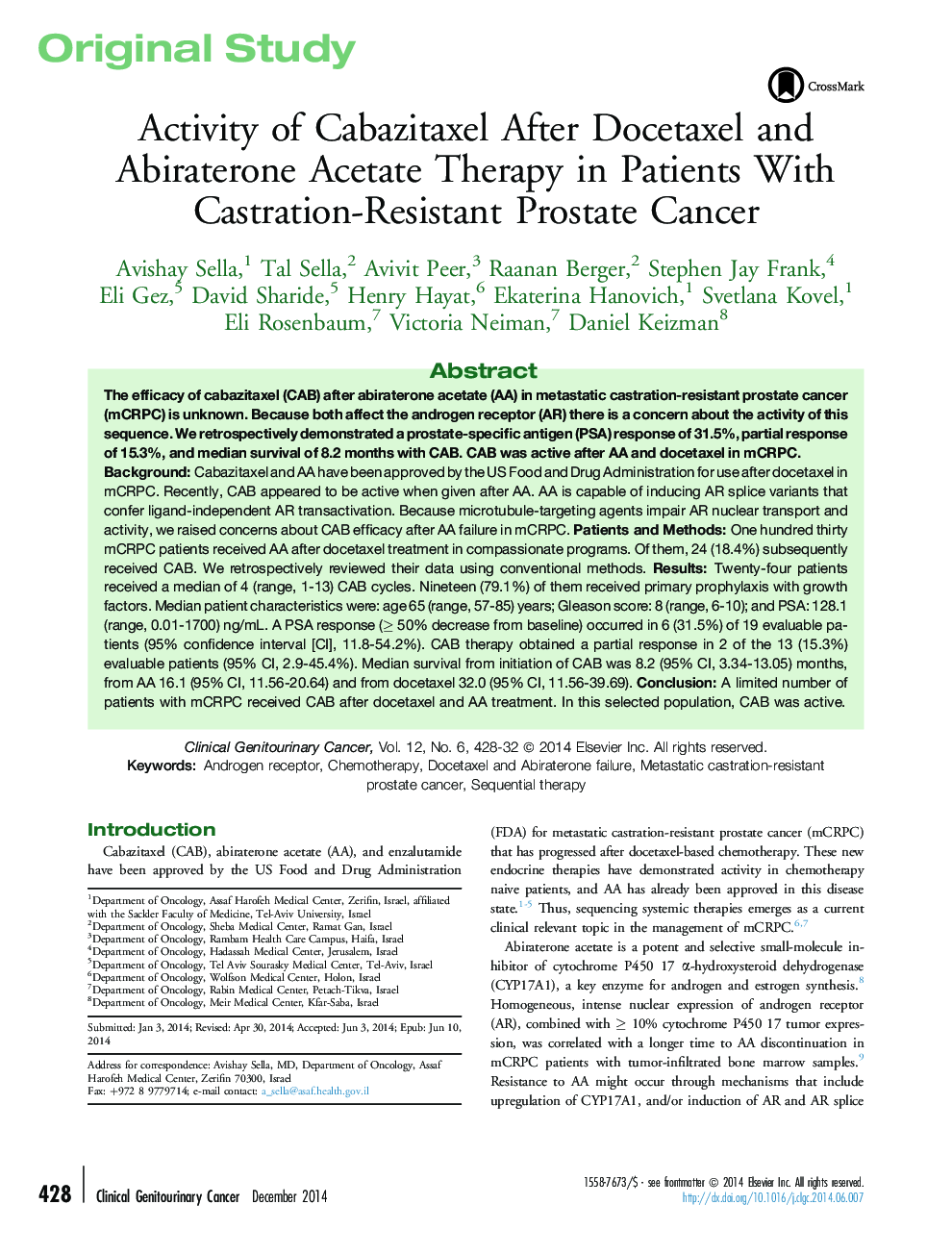| کد مقاله | کد نشریه | سال انتشار | مقاله انگلیسی | نسخه تمام متن |
|---|---|---|---|---|
| 2752099 | 1149543 | 2014 | 5 صفحه PDF | دانلود رایگان |

BackgroundCabazitaxel and AA have been approved by the US Food and Drug Administration for use after docetaxel in mCRPC. Recently, CAB appeared to be active when given after AA. AA is capable of inducing AR splice variants that confer ligand-independent AR transactivation. Because microtubule-targeting agents impair AR nuclear transport and activity, we raised concerns about CAB efficacy after AA failure in mCRPC.Patients and MethodsOne hundred thirty mCRPC patients received AA after docetaxel treatment in compassionate programs. Of them, 24 (18.4%) subsequently received CAB. We retrospectively reviewed their data using conventional methods.ResultsTwenty-four patients received a median of 4 (range, 1-13) CAB cycles. Nineteen (79.1%) of them received primary prophylaxis with growth factors. Median patient characteristics were: age 65 (range, 57-85) years; Gleason score: 8 (range, 6-10); and PSA: 128.1 (range, 0.01-1700) ng/mL. A PSA response (≥ 50% decrease from baseline) occurred in 6 (31.5%) of 19 evaluable patients (95% confidence interval [CI], 11.8-54.2%). CAB therapy obtained a partial response in 2 of the 13 (15.3%) evaluable patients (95% CI, 2.9-45.4%). Median survival from initiation of CAB was 8.2 (95% CI, 3.34-13.05) months, from AA 16.1 (95% CI, 11.56-20.64) and from docetaxel 32.0 (95% CI, 11.56-39.69).ConclusionA limited number of patients with mCRPC received CAB after docetaxel and AA treatment. In this selected population, CAB was active.
Journal: Clinical Genitourinary Cancer - Volume 12, Issue 6, December 2014, Pages 428–432